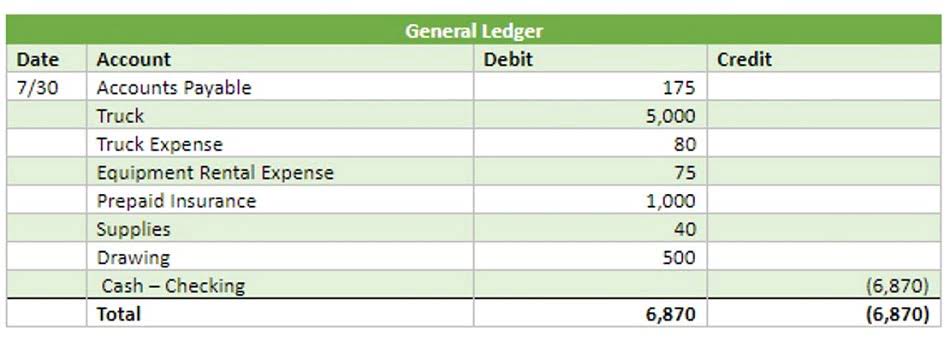
Return on equity measures how effectively a company uses shareholder equity to generate profits. The return on equity formula divides net income by the average shareholder’s equity. Return on assets (ROA) measures how effectively a company uses assets to generate revenue and profits. An average balance is the sum of the beginning period balance and the ending period balance, divided by two. Gross profit margin, or “Gross Margin”, is basically Accounts Payable Management how profitable a product or service is before you account for the operating costs, taxes, and interest payments to run the business.

It helps determine pricing and improvements
Gross profit margin is one of the three main margin formulas in a company’s income statement, which measures a company’s efficiency in creating profitability. In accounting, the gross margin refers to sales minus cost of goods sold. It is not necessarily profit as other expenses such as sales, administrative, and financial costs must be deducted. A consistent increase in the gross profit ratio could be a sign that the company is strengthening its market position and improving its cost efficiency. On the other hand, a downward trend could be a red flag, prompting further investigation into potential issues such as escalating costs, pricing pressures, or changes in consumer demand.
Write Off Repayment Of A Business Loan
- A high enough gross profit margin ratio is generally preferable as it indicates that a company is able to generate more profit from its sales.
- Pay attention to the price, and buy in bulk when prices are low or supplies are on sale.
- When determining what is a good gross margin, compare your percentage against industry standards rather than across sectors.
- The firm offers bookkeeping and accounting services for business and personal needs, as well as ERP consulting and audit assistance.
- Profitability metrics are important for business owners because they highlight points of weakness in the operational model and enable year-to-year performance comparison.
This profitability ratio evaluates the strength of a company’s sales performance in relation to production costs. The higher the gross margin, the more profit a company is retaining. Gross margin is the percentage of profits an organization is able to retain after all deducting all direct expenses relating to production. To understand the sales gross margin formula, it is important to understand a few other concepts around it such as https://kuchotel.bg/mccurdy-stewart-southward-p-c-cpa-s/ gross sales, cost of goods sold, and net sales.
Importance of Gross Margin Ratio

Gross edge can likewise be a level of the net deals of a business. Gross margin can likewise be a percentage of the net sales of a business. Gross margin is the percentage of income that a company keeps after deducting direct expenses such as materials and labor. Margins for the utility industry will vary from those of companies in another industry. According to a New York University analysis of industries in January 2025, the average net profit margins range from about 27% for software (entertainment) to -19% for green and renewable energy.

Need a business plan?

That’s because the company is spending nearly as much money as it’s receiving from gross sales. Both the total sales and cost of goods sold are found on the income statement. Occasionally, COGS is broken down into smaller categories of costs like materials and labor. This equation looks at the pure dollar amount of GP for the company, but many times it’s helpful to calculate the gross profit rate or margin as a percentage. A good gross margin ratio is often considered to be anywhere between 50% to 70%.
- This is achieved by subtracting the cost of goods sold from the net sales.
- Calculating gross margin allows a company’s management to better understand its profitability in a general sense.
- Every business uses assets to generate revenue, so business owners must maintain and replace assets.
- You can find industry benchmarks for gross profit margin in our reference book.
- To understand why these ratios are useful, consider a plumbing business.
How to Apply for a Business Loan for Your Restaurant
If a retailer had net sales of $40,000 and its cost of goods sold was $24,000, the retailer had a gross margin of $16,000 or 40% of net sales ($16,000/$40,000). Monica owns a clothing business that designs and manufactures high-end clothing for children. She has several different lines of clothing and has proven to be one of the most successful brands in her space. Here’s what appears on Monica’s income statement at the end of the year. The gross profit of the retail business – the difference between revenue and COGS – is $2 million here. This balance involves either keeping costs low in gross margin ratio the pursuit of revenues, or commanding higher customer prices.

Reduce your material costs
- High margins make it simpler for organizations to track down extra funding.
- Also, the gross profit margin can be computed as 1 − Cost of sales ratio.
- Returning to the example of the shoe company with a 32.9% profit margin, imagine that it spends $4.3 million on non-operating expenses.
- The business’s operating profit margin (or operating margin) includes more expenses.
- A larger ratio would be produced by marking up products and selling them for more money.
- For example, customers often need more information before making a buying decision.
First, subtract the cost of goods sold from the company’s revenue. This figure is the company’s gross profit expressed as a dollar figure. Divide that figure by the total revenue and multiply it by 100 to get the gross margin. Gross margin helps a company assess the profitability of its manufacturing activities. Net profit margin helps the company assess its overall profitability. Companies and investors can determine whether the operating costs and overhead are in check and whether enough profit is generated from sales.
